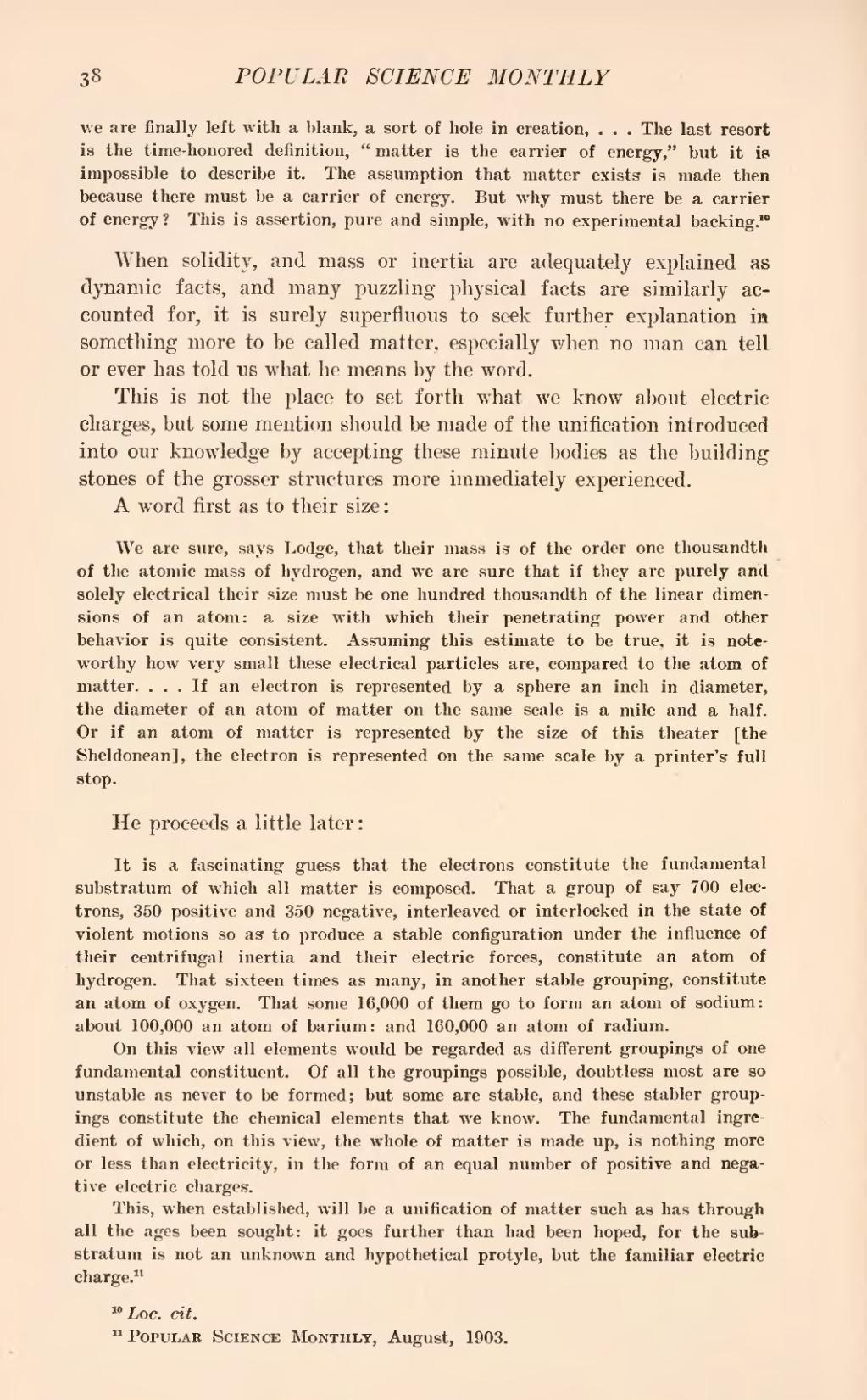When solidity, and mass or inertia are adequately explained as dynamic facts, and many puzzling physical facts are similarly accounted for, it is surely superfluous to seek further explanation in something more to be called matter, especially when no man can tell or ever has told us what he means by the word.
This is not the place to set forth what we know about electric charges, but some mention should be made of the unification introduced into our knowledge by accepting these minute bodies as the building stones of the grosser structures more immediately experienced.
A word first as to their size:
He proceeds a little later:
It is a fascinating guess that the electrons constitute the fundamental substratum of which all matter is composed. That a group of say 700 electrons, 350 positive and 350 negative, interleaved or interlocked in the state of violent motions so as to produce a stable configuration under the influence of their centrifugal inertia and their electric forces, constitute an atom of hydrogen. That sixteen times as many, in another stable grouping, constitute an atom of oxygen. That some 16,000 of them go to form an atom of sodium: about 100,000 an atom of barium: and 160,000 an atom of radium.
On this view all elements would be regarded as different groupings of one fundamental constituent. Of all the groupings possible, doubtless most are so unstable as never to be formed; but some are stable, and these stabler groupings constitute the chemical elements that we know. The fundamental ingredient of which, on this view, the whole of matter is made up, is nothing more or less than electricity, in the form of an equal number of positive and negative electric charges.
This, when established, will be a unification of matter such as has through all the ages been sought: it goes further than had been hoped, for the substratum is not an unknown and hypothetical protyle, but the familiar electric charge.[2]

